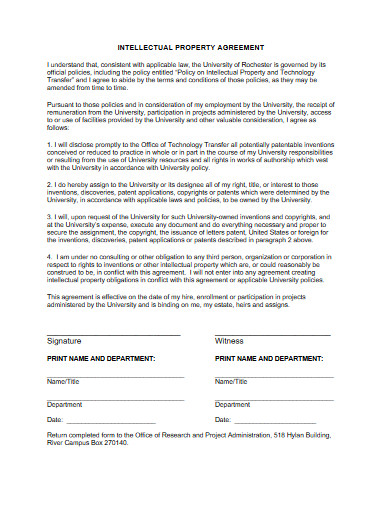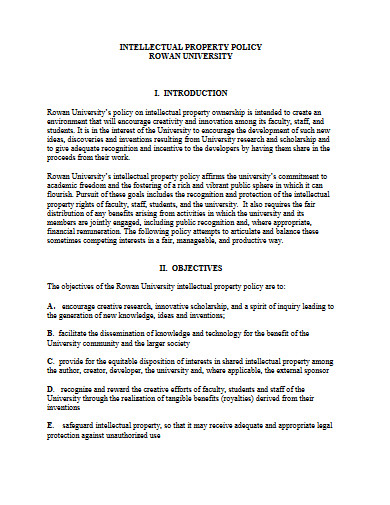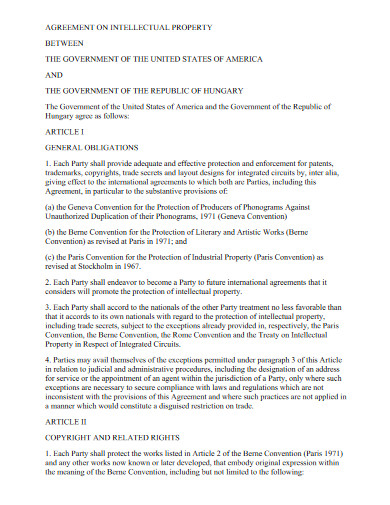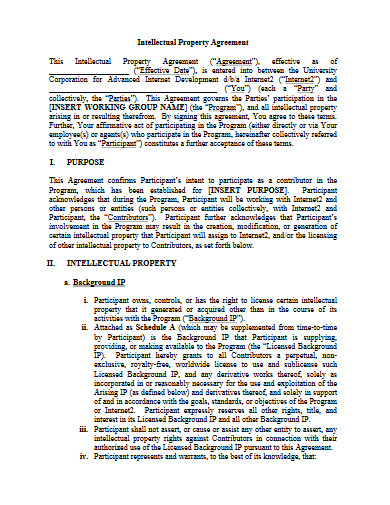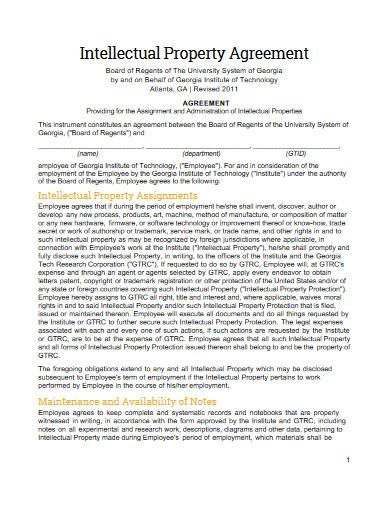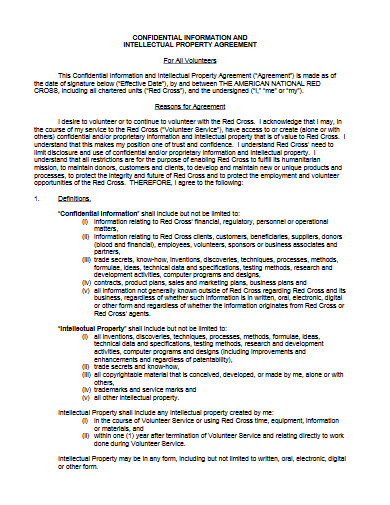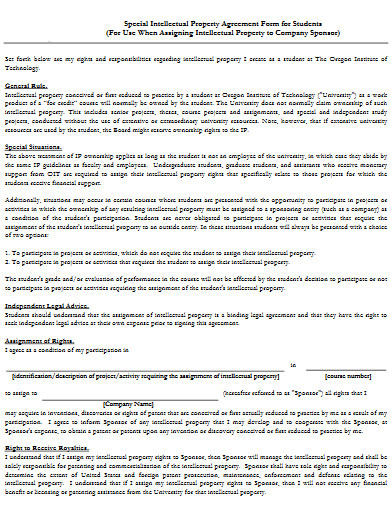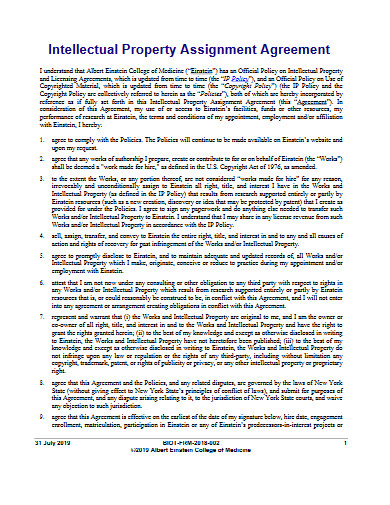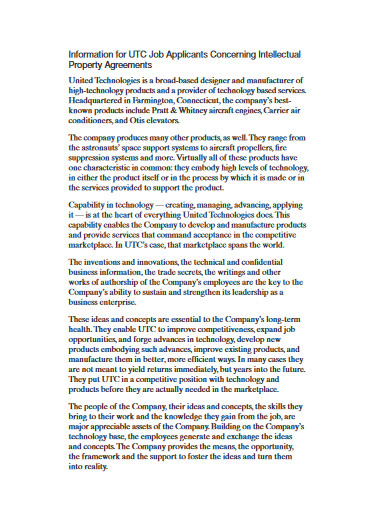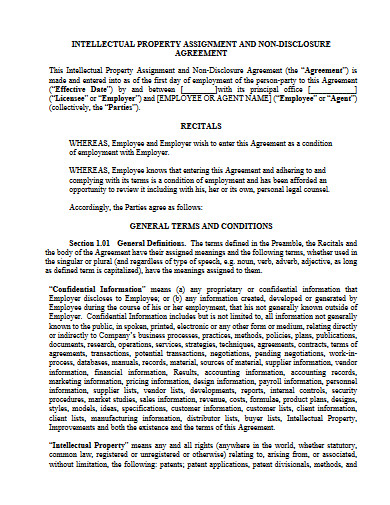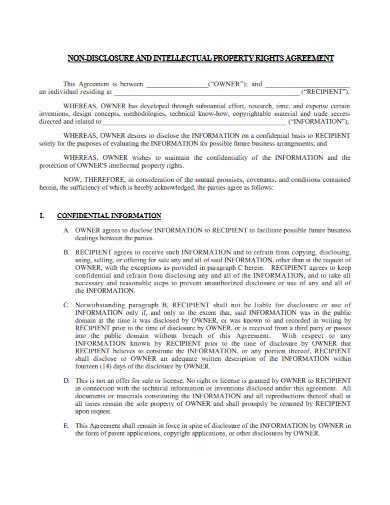10+ Intellectual Property Agreement Examples
We all have unique ideas about something, and we’d love the whole world to know. Obviously, coming up with these ideas isn’t that easy because it takes a lot of research, creativity, and patience to develop one. With that being said, your idea or intellectual property needs protection from those who want to steal and profit from it. One way of doing so is by producing legal agreements to have proof of any settlement regarding your property rights, copyright, patent, or trademark. Whether it’s about the confidentiality of the proprietary information or non-disclosure agreement, or co-ownership between licensee and licensor or license agreement, such documents are necessary to avoid infringement. Learn more about these agreements through our examples and article below.
10+ Intellectual Property Agreement Examples
1. Intellectual Property Agreement
2. Intellectual Property Policy Agreement
3. Agreement on Intellectual Property
4. Intellectual Property Agreement Template
5. HR Intellectual Property Agreement
6. Confidential Intellectual Property Agreement
7. Special Intellectual Property Agreement Form
8. Intellectual Property Assignment Agreement
9. Job Applicants Intellectual Property Agreement
10. Employees Intellectual Property Agreement
11. Intellectual Property Rights Agreement
What Is an Intellectual Property Agreement?
An intellectual property agreement is a business arrangement between an intellectual property owner and an organization who wants to make use of the idea or concept. It thoroughly details the consent given by the owner to the buying party, as well as each party’s obligations during the agreement period. Aside from that, the legal document also discusses how the idea or concept privileges will be distributed to its proponents, including the group of researchers and its individual members. The agreement also goes by its other names, which include IP agreement, intellectual property transfer agreement, and intellectual property assignment agreement.
Types of Intellectual Property Rights
According to InQuartik, intellectual property rights (IP) have four types. These include patents, proprietary rights, trademark, and copyright.
Patent – Through this type of IP, the recreation, reselling, and the usage of any invention is prohibited unless given permission by the owner.
Proprietary Rights – This type of IP refers to systems, formulas, methodologies, and other confidential pieces of information of an organization that should not be used by other parties to maintain a competitive advantage in the market
Trademark – This type of IP focuses on protecting signs, logos, roll up banner designs, and other graphic representations that are uniquely made by a certain individual or organization.
Copyright – This type of IP only protects palpable creations or authentic works, such as music, art, and drawings.
How To Prepare an Intellectual Property Agreement
The intellectual property agreement, just like any other agreement, has to be made thoroughly and concisely. With each of its parts playing a very important role, every detail must also be made in accordance with the standard documentation procedure. To help you with that, here’s our outline of steps to walk you through in preparing your much-needed intellectual property agreement successfully.
1. Present the Agreement’s Purpose
When making a business-related document, like a contract, agreement, business letter, and even a business email, you have to start with its purpose. We know that learning what a document is for is the first thing we try to look at. The same goes for many others. So, you must present your IP agreement’s purpose, first and foremost.
2. Name the Involved Parties
The names of the involved parties are always among the key elements in writing contracts or agreements. Most agreements whose purposes concern intellectual properties address their participants as the “Parent” and the “Buyer.” This is right after the real names are mentioned once.
3. Explain the Confidentiality Terms
It was clearly established above that coming up with unique ideas requires a part of your resources, time, and effort. In other words, these innovations are highly expensive, making it a good subject for counterfeits and forgeries. This is why you have to include a section where you can set the mutual confidentiality agreement concerning the IP.
4. Write Down the Specifications on Ownership
If your agreement is all about another party purchasing IP rights, then it is necessary for you to write down all the specifications as for the ownership. Oftentimes, this matter should be written in a different document, specifically a patent license agreement. However, the ownership section is still applicable in your agreement as per standard document flow.
5. Set Out the Particulars About Access
Almost all of the IP’s are secured in data inventories as part of the documentation policies of many companies. Because of this fact, you must be ready to set out access particulars to the “Buying” party. A good example is when the “Parent” party promises to give out the passwords to the decrypted IP files to the other party once the deal is on.
6. Add the Termination Clause
For many years, accounts of unsuccessful business transactions encourage many entrepreneurs, inventors, and intellectuals to be cautious about getting involved in one. For the same reason, you have to state your agreement’s termination policies and procedures clearly. This section is important, so both parties will be guided on what actions must be taken in case disputes occur.
FAQs:
How can we get a patent?
An individual or group can get a patent by producing a patent application that will be submitted to patent offices in the country. In the United States, it is the United States Patent and Trademark Office, which is under the United States Department of Commerce, which recognizes and approves such an application.
Who has the most number of patents in the United States?
Thomas Alva Edison holds the most number of patents in the United States. In the overall, he tallied 1,093 U.S. Patents, consisting of 1,084 utility patents and nine design patents. On a global scale, his record was surpassed by Japanese inventor Shunpei Yamazaki in 2003, tallying 2,000 total patents.
What is the difference between a permit and a license?
A permit authorizes a specific person or group to do or use something. Before it is granted, inspections must be conducted. On the other hand, a license is more of a general permission that is also granted to a specific individual or organization to perform or utilize something. When it comes to requirements, permits are more complicated compared to licenses.
Having your very own intellectual property is a great advantage against your competitors in the market. With that in mind, it should be protected amid a business transaction, which is something that an intellectual property agreement is compelled to do.



